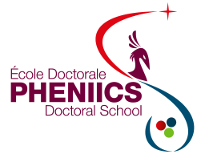Orateur
M.
hugues Paradis
(IRSN)
Description
The laboratory of environmental radioactivity measurement performs around 2000 measurements per year by low level gamma ray spectrometry, either in the framework of the environmental surveillance in France handled by the IRSN, or for research or expertise purpose in the radioecology domain. In both cases the anthropogenic radioactivity in environment samples is measured at trace levels and metrology developments are continuously necessary in order to deal with these very low levels.
The latest development is the gamma-gamma coincidence measurement based on the use of two germanium detectors to detect one photon in each detector.
This method was firstly implemented on an anti-Compton system, consisting of a germanium (HPGe) detector surrounded by two sodium iodide scintillators (NaI(Tl)): an annulus and a plug to cover around 4The digital acquisition electronics provides a list mode file with energy and time stamp information for each detected event. An algorithm was developed to plot spectra (classic, in coincidence or in anti-coincidence) or the coincidence matrix (energy loss in the NaI detector versus energy loss in the HPGe). The algorithm searches and counts the coincidence events of interest in the matrix around their theoretical location and the corresponding activity is determined by way of a calibration factor. It was obtained by the experimental measurement of standard sources containing for instance 60Co or 88Y and by Monte Carlo simulations using MCNP_CP (Berlizov,2013). Both calibration coefficients are perfectly in agreement and the method can be extended to all radionuclides: 134Cs, 152Eu, 108mAg…
This analysis method was therefore used on a new versatile system developed and optimized in terms of efficiency, low background and compactness: it consists of two HPGe detectors face to face surrounded by a NaI(Tl) scintillator. The whole system is surrounded by a 5 cm lead shield. This new system is installed in a 20 m² shielded room (10 cm lead, 5 mm copper) located in the second basement of the laboratory under a slab of 3 meters of borated concrete.
Thanks to the analysis code of the list mode file, a measurement can be analysed at once in the following different ways:
1. Classic Ge spectrum for each Ge detector.
2. Summation of spectra of both detectors. The efficiency increase leads to decrease uncertainties and detection limits and counting time for single emitters.
3. Anti-cosmic spectrum.
The cosmic ray induced background decrease leads to a better determination of 137Cs in aerosol filters for instance.
4. Anti-Compton spectrum.
The Compton continuum decrease leads to a better determination of single emitters (with energy lower than 1460 keV) in biological matrices containing much 40K.
5. Coincidence Ge-Ge matrix of Ge spectrum in coincidence.
This is the most powerful tool for all the coincident emitters due to a drastically decreased background. Moreover some radionuclides have many coincident emissions and all the data can be accumulated (for instance, 108mAg has 6 usable coincidences) to make the determination more accurate.
The gamma-gamma coincidence techniques used on the anti-Compton system divides detection limits by a factor of 10 (It shows also that the calibration can be done by MCNP_CP simulations). First results on the new Ge-Ge-NaI system show dramatically reduced noise in matrices and spectra and all the possibilities with only one measurement.
References
Berlizov.A, (2013) MCNP_CP, A correlated Particle Radiation Source Extension of a General Purpose Monte Carlo N-Particle Transport Code.
Auteur principal
M.
hugues Paradis
(IRSN)
Co-auteurs
Mme
Anne de Vismes Ott
(IRSN)
M.
Fabrice Piquemal
(CENBG)
M.
Rodolfo Gurriaran
(IRSN)
M.
Xavier Cagnat
(IRSN)



